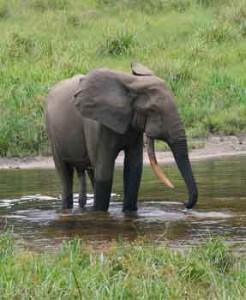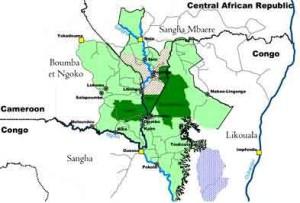

As the name suggests, the Sahgha Tri-National Protected area is an intersection of three national parks at the boundary of the Republic of Congo, Cameroon, and the Central African Republic. This unique region has just been declared as a UNESCO World Heritage Site, and is the first Site to span three countries.
“The TNS is the wild heart of the Congo Basin Rainforest. It contains some of the last great populations of African forest elephants, gorillas, chimpanzees, and other endangered species.” said James Deutsch, the Wildlife Conservation Society’s director of Africa Programs, in a prepared statement.
For a region that has been historically threatened by unsustainable exploitation of resources, such as poaching for ivory and illegal logging operations, the UNESCO World Heritage Site designation is a major victory — one that required decades of conservation efforts from both government and private organizations in all three countries

“This World Heritage status will introduce the TNS to the rest of the world and lead to increased support for the continued protection of the area’s globally important biodiversity and for the people that depend on it.” said Stefanie Conrad, regional representative of WWF for the Central Africa region, in a prepared statement.
Often nature preserves or protected areas are confined to small territories, smaller than the ranges of the animals that inhabit them. Not so in this case where the preservation of such a large ecological area will hopefully ensure the habitat remains functional and ecosystems will be undisturbed.
Read More:
Central Africa Region Named World Heritage Site
Sangha Tri-National Protected Area Declared A World Heritage Site
Photos courtesy of Peter H. Wrege, via Wikimedia Commons and TNS Foundation.